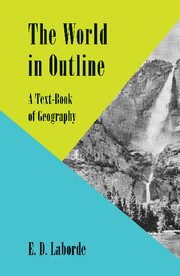Natural Regions
from PART IV - NORTH AMERICA
Published online by Cambridge University Press: 05 June 2016
Summary
The various combinations of natural conditions enable the continent to be divided for study into eleven regions, namely—(1) the tropical south, (2) the subtropical west coast, (3) the Mediterranean region of California, (4) the great topland region, (5) the subtropical lands of the centre, (6) the subtropical east coast, (7) the temperate east coast, (8) the temperate lands of the interior, (9) the northern Rockies, (10) the temperate west coast, and (11) the Arctic coast. The map on page 283 indicates their positions.
THE REGIONS
The Tropical South. This includes the southern coastlands of Mexico, the extreme end of the peninsula of Florida, and Central America from the Isthmus of Tehuantepec to the eastern frontier of the Republic of Panama. The coastal lowlands bordering the Pacific are narrow, but those facing the Atlantic are somewhat broader, especially in the peninsula of Yucatan. Florida is low-lying and swampy. Through the length of Central America runs a backbone of mountains belonging to the ancient Antillean ranges and having therefore an east-and-west grain. The divide formed by it hugs the Pacific coast.
The climate is hot, for the temperature ranges between 70° and 80° F. There is a distinctly cool season in January and February, when the heat is tempered by the Northeast Trades which are strongest at this time. Heavy relief rains fall throughout the year on the mountains, but the lower ground has a tropical régime, with a maximum in summer when the Trades are at their weakest. Florida has an abundant rainfall, evenly distributed throughout the year. Its coasts are often laid waste by hurricanes travelling northwestwards from the West Indies. These storms rarely enter the Gulf of Mexico, but in 1933 Tampico was, almost destroyed by one, and in 1931 even British Honduras was ravaged.
The coastline is swampy and mangrove-fringed, but behind this there is on the Atlantic shores a strip of lowland varying from ten to one hundred miles wide on which the natural vegetation has been replaced by cultivation. On the hilly country farther inland there is dense tropical forest, in which, besides the mahogany, logwood, and carob, there are many palms, like the cabbage palm and the grugru, while the more open woodland bursts at times into a blaze of scarlet with the blossoms of the flamboyant.
- Type
- Chapter
- Information
- The World in OutlineA Text-Book of Geography, pp. 282 - 329Publisher: Cambridge University PressPrint publication year: 2013



